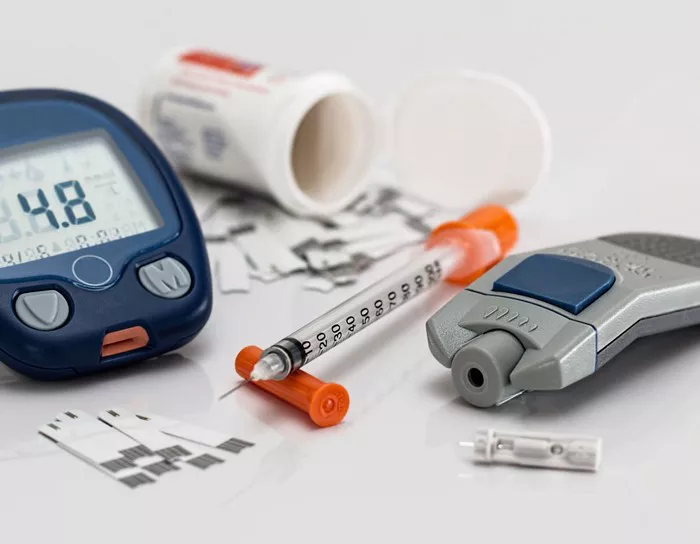Type 1 diabetes is a chronic autoimmune condition characterized by the destruction of insulin-producing beta cells in the pancreas. As a result, individuals with type 1 diabetes require lifelong insulin therapy to regulate their blood sugar levels and prevent complications.
In this comprehensive guide, we’ll explore the various aspects of insulin therapy for type 1 diabetes management, including the types of insulin available, insulin regimens, delivery methods, monitoring, and considerations for personalized treatment plans.
Understanding Type 1 Diabetes and the Need for Insulin
Type 1 diabetes develops when the immune system mistakenly attacks and destroys the insulin-producing beta cells in the pancreas. Without sufficient insulin production, glucose cannot enter cells to provide energy, leading to high blood sugar levels. Insulin therapy is essential for individuals with type 1 diabetes to replace the insulin their bodies cannot produce, allowing them to effectively manage their condition and lead healthy lives.
Types of Insulin for Type 1 Diabetes
Insulin formulations are classified based on their onset, peak action, and duration of effect, which determine their suitability for various aspects of diabetes management. The main types of insulin used in type 1 diabetes treatment include:
1. Rapid-Acting Insulin:
Rapid-acting insulin analogs, such as insulin lispro (Humalog), insulin aspart (NovoLog), and insulin glulisine (Apidra), have a quick onset of action, typically within 15 minutes of administration. They are commonly used to cover mealtime blood sugar spikes and can be administered shortly before or immediately after meals.
2. Short-Acting Insulin:
Short-acting insulin, also known as regular insulin, has a slower onset of action compared to rapid-acting insulins. It typically begins working within 30 minutes of injection, with peak effects occurring 2-3 hours later. Short-acting insulin is often used to control blood sugar levels between meals and overnight.
3. Intermediate-Acting Insulin:
Intermediate-acting insulin, such as neutral protamine Hagedorn (NPH) insulin, has a delayed onset of action and a longer duration of effect compared to rapid and short-acting insulins. It starts working within 2-4 hours, peaks in 4-12 hours, and lasts for up to 18 hours. Intermediate-acting insulin is commonly used to provide basal insulin coverage throughout the day and night.
4. Long-Acting Insulin:
Long-acting insulin formulations, including insulin glargine (Lantus, Basaglar, Toujeo), insulin detemir (Levemir), and insulin degludec (Tresiba), provide a steady release of insulin over an extended period, typically lasting 24 hours or longer. They are used to provide basal insulin coverage and help maintain stable blood sugar levels between meals and overnight.
Insulin Regimens for Type 1 Diabetes
Managing type 1 diabetes often involves the use of multiple daily insulin injections or insulin pump therapy. Common insulin regimens include:
1. Basal-Bolus Regimen:
This regimen involves administering long-acting (basal) insulin to provide continuous background insulin coverage and rapid-acting (bolus) insulin before meals to cover carbohydrate intake and prevent postprandial hyperglycemia.
2. Multiple Daily Injections (MDI):
With MDI therapy, individuals typically inject basal insulin once or twice daily and bolus insulin before each meal, adjusting doses based on blood sugar levels, carbohydrate intake, and physical activity.
3. Continuous Subcutaneous Insulin Infusion (CSII):
Insulin pump therapy delivers rapid-acting insulin continuously throughout the day and allows for precise insulin dosing adjustments, including basal rate changes and bolus doses for meals and corrections.
Methods of Insulin Delivery
Insulin can be administered through various methods, including:
1. Subcutaneous Injection:
The most common method of insulin delivery involves injecting insulin into the fatty tissue just beneath the skin using a syringe, insulin pen, or insulin pump infusion set.
2. Insulin Pump Therapy:
Insulin pumps are small, wearable devices that deliver insulin continuously through a thin tube inserted under the skin. They offer precise insulin dosing and flexibility in mealtime insulin adjustments.
3. Inhalable Insulin:
Inhalable insulin powder, delivered via a specialized inhaler device, provides rapid-acting insulin coverage for mealtime blood sugar control and is an alternative option for individuals who prefer non-injectable insulin delivery.
Blood Sugar Monitoring and Adjusting Insulin Doses
Regular blood sugar monitoring is essential for individuals with type 1 diabetes to assess their insulin needs, identify patterns, and make informed adjustments to their insulin doses. Continuous glucose monitoring (CGM) systems provide real-time blood sugar readings and alerts for high and low blood sugar levels, enabling proactive management of diabetes.
Adjusting insulin doses may be necessary based on factors such as carbohydrate intake, physical activity, illness, stress, and hormonal changes. Healthcare providers work closely with individuals with type 1 diabetes to establish personalized insulin regimens and provide education on insulin dose adjustments and carbohydrate counting.
Considerations for Personalized Treatment Plans
When developing personalized treatment plans for type 1 diabetes management, healthcare providers consider various factors, including:
- Individual insulin requirements and sensitivity
- Lifestyle factors, such as diet, exercise, and daily routines
- Blood sugar targets and glycemic control goals
- Presence of coexisting medical conditions or complications
- Patient preferences for insulin administration and monitoring methods
By working collaboratively with healthcare providers and diabetes care teams, individuals with type 1 diabetes can optimize their insulin therapy, achieve better blood sugar control, reduce the risk of diabetes-related complications, and improve their overall quality of life.
Conclusion
In conclusion, insulin therapy is a cornerstone of type 1 diabetes management, providing individuals with the essential hormone they need to regulate their blood sugar levels and stay healthy. With a variety of insulin formulations, delivery methods, and treatment regimens available, individuals with type 1 diabetes have the flexibility to tailor their insulin therapy to meet their unique needs and preferences.
By working closely with healthcare providers, staying informed about advances in diabetes management, and adopting healthy lifestyle habits, individuals with type 1 diabetes can effectively manage their condition, minimize complications, and lead fulfilling lives.


























